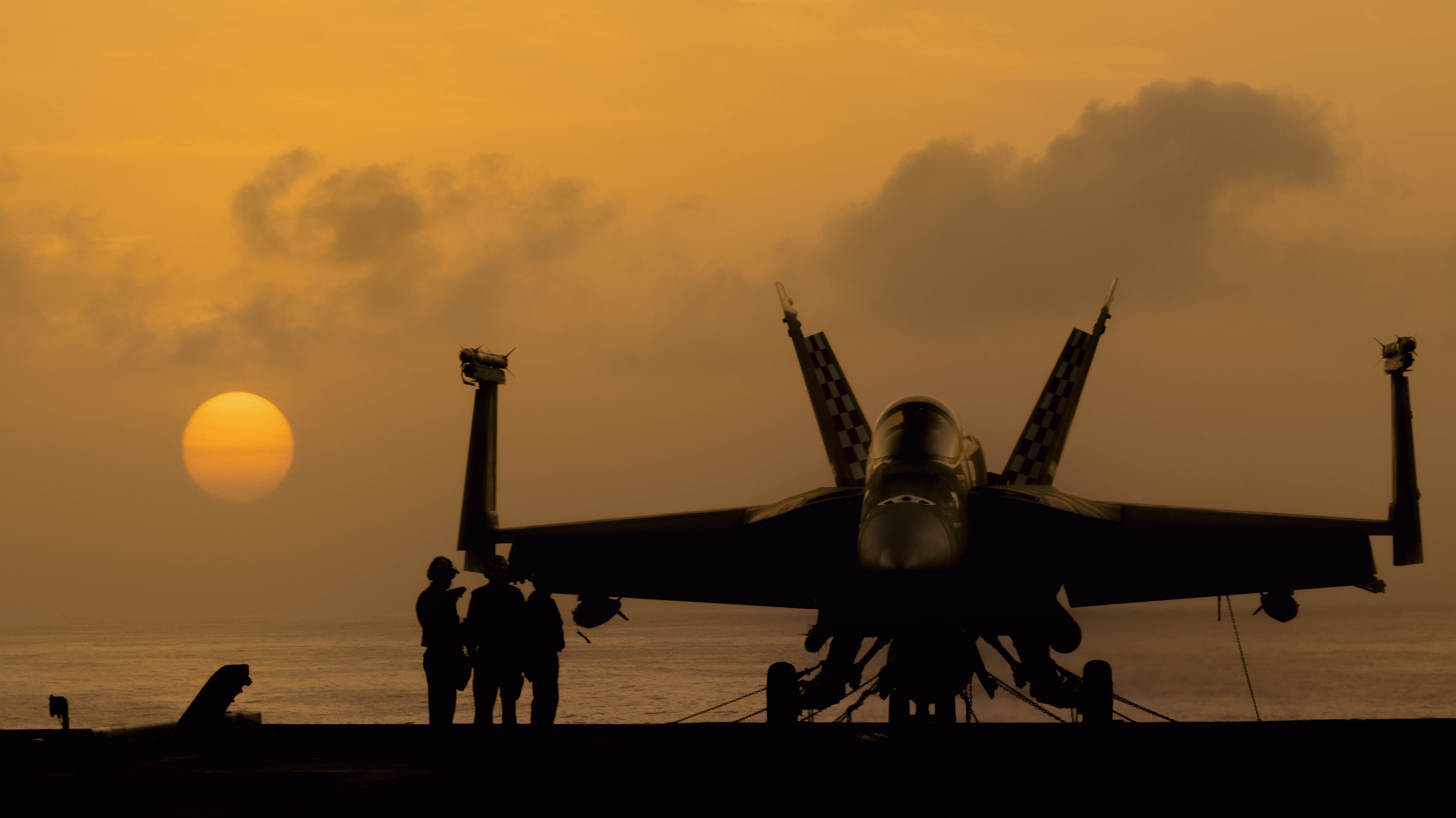Two Navy destroyers launched around a dozen interceptors to help defend Israel against a massive attack by Iran on Tuesday, the Pentagon said.
Pentagon spokesman Air Force Maj. Gen. Pat Ryder declined to say what kind of ordnance was used by the warships Cole and Bulkeley, or whether their intercept were successful, but he said the operations took place while both ships were in the Eastern Mediterranean Sea.
Iran’s direct and widespread missile attack on Israel Tuesday was the second of the year, and once again threatened to spark all-out war in the Middle East, a grim future that the United States has worked to stave off since the Palestinian militant group Hamas attacked Israel on Oct. 7.
The sky lit up over central and southern Israel Tuesday evening as ballistic missiles collided with air defense interceptors. Both the Pentagon and the Israel Defense Forces said they were still assessing the attack, but that Iran had launched around 200 missiles and there had been no recorded casualties.
“Initial reports indicate that Israel was able to intercept the majority of incoming missiles and that there was minimal damage on the ground,” Ryder said.
National Security Adviser Jake Sullivan called Iran’s response “failed and ineffective,” but warned that it was also a “significant escalation.”
RELATED

“This [result] was first and foremost the result of the professionalism of the IDF, but in no small part, because of the skilled work of the U.S. military and meticulous joint planning in anticipation of the attack,” Sullivan said.
Iran’s attack comes a week after Israel assassinated the leader of Hezbollah, a Lebanese militia group that Tehran has armed for years. The strike in Beirut, followed by operations Israel launched across the border, have escalated a burgeoning conflict in Lebanon.
The U.S. has already surged forces to the Middle East to help defend Israel and its own forces. It continued to do so this week, sending three fighter squadrons, including F-15s, F-16s and A-10s. This almost doubles the number of fighters in U.S. Central Command, which oversees American military operations in the Middle East.
Over the weekend, Defense Secretary Lloyd Austin also ordered the aircraft carrier Abraham Lincoln to remain in the region as a bulwark against a wider war. Another carrier, the Harry S. Truman, is heading to U.S. European Command.
These posture changes will add “a few thousand” U.S. forces to CENTCOM, according to the Pentagon, adding to the 40,000 already there — 6,000 more than normal.
The U.S. insists the surge in forces has helped avert an a wider war in the region, an assessment Ryder repeated from the podium Tuesday, despite the recent attacks.
“We’ve been working very hard from the beginning to prevent a wider regional conflict.,” he said. “Certainly, the type of aggressive action that we saw by Iran today makes that more challenging.”
American forces, meanwhile, are under an elevated threat from Iran-backed proxies in the region.
Last week, the Houthis, a militia group in Yemen, launched what the Pentagon called a “complex attack” with aerial drones and cruise missiles on U.S. ships in the Red Sea, though officials said no ships were struck and no sailors were injured.
Iran’s attack Tuesday included around two times as many ballistic missiles than a similar barrage this April, which largely featured aerial drones that are much easier to intercept, Ryder said. No U.S. forces were targeted in the attack Tuesday, he continued.
Austin spoke with his Israeli counterpart to discuss the attack and the “severe consequences” that would follow for Iran. Ryder wouldn’t elaborate on what those consequences will be, nor whether the U.S. would assist Israel in a direct strike on Iranian territory.
Noah Robertson is the Pentagon reporter at Defense News. He previously covered national security for the Christian Science Monitor. He holds a bachelor’s degree in English and government from the College of William & Mary in his hometown of Williamsburg, Virginia.







